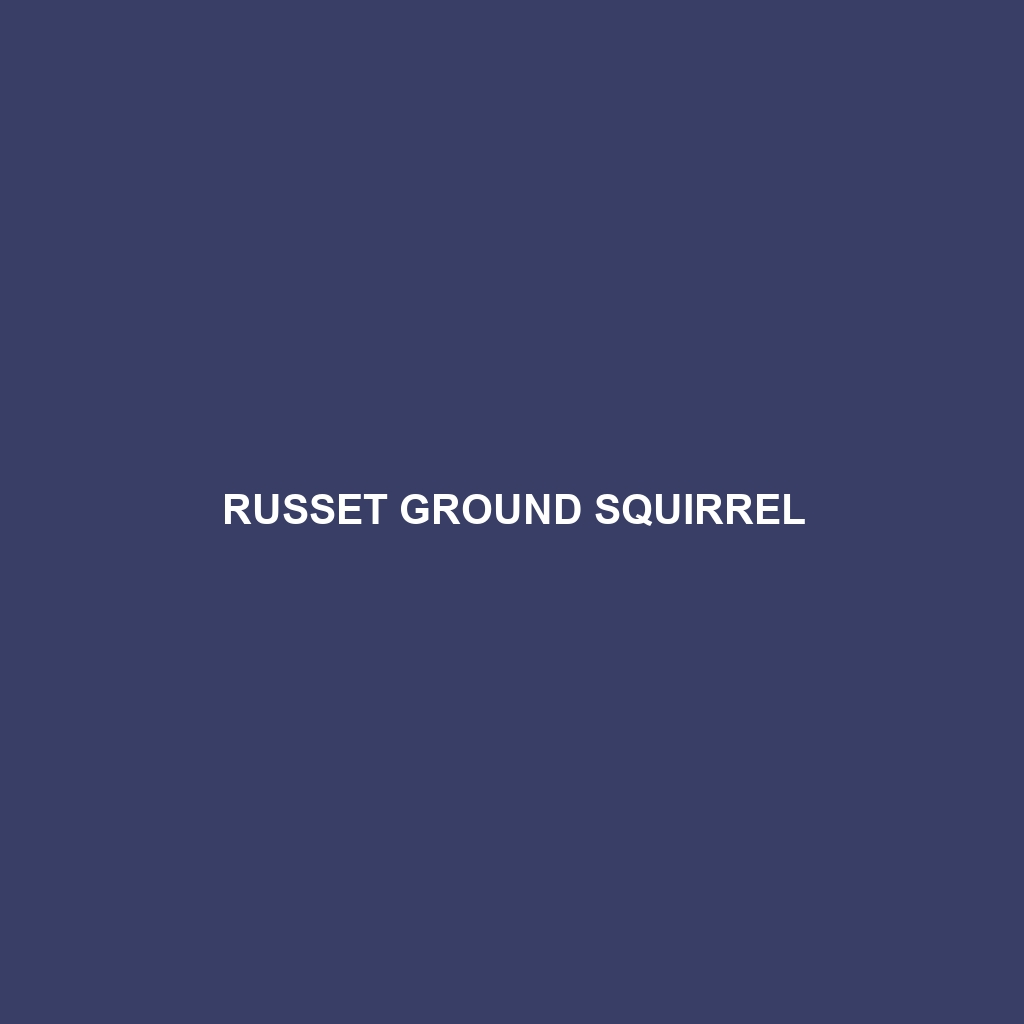Russet Ground Squirrel
Common Name: Russet Ground Squirrel
Scientific Name: Spermophilus latteralis
Habitat
The Russet Ground Squirrel is primarily found in the mountainous regions of western North America, particularly in parts of Canada and the United States. This species thrives in open grasslands, alpine meadows, and the edges of forests. They prefer well-drained soil that allows for burrowing and are often seen at elevations ranging from 1,500 to 3,400 meters.
Physical Characteristics
Adult Russet Ground Squirrels typically measure between 20 to 30 centimeters in length, excluding the tail, which adds another 7 to 12 centimeters. Their fur is characterized by a rich russet-brown coloration, with lighter grayish underparts. Notable features include a short, bushy tail and small, rounded ears, which help them blend into their natural habitat. Their robust body shape and strong limbs make them agile diggers.
Behavior
These squirrels are diurnal, meaning they are active during the day. They are known for their burrowing behavior and spend a significant amount of time foraging for food. During spring and summer, they exhibit social behaviors, sometimes foraging in groups, which can lead to increased vigilance against predators. They communicate through a series of high-pitched calls to warn their peers of potential threats.
Diet
The diet of the Russet Ground Squirrel consists primarily of seeds, grasses, and various plant materials. They are known to forage on the seeds of wildflowers and other flowering plants. During the fall, they engage in hoarding behaviors, storing food to sustain them throughout the winter months when food is scarce.
Reproduction
Russet Ground Squirrels breed in late spring, typically from April to June. After a gestation period of about 30 days, females give birth to a litter of 3 to 10 pups. The young squirrels are altricial, meaning they are born blind and helpless, requiring care from their mother. Weaning occurs around six weeks, and the young begin foraging independently by late summer.
Conservation Status
The current conservation status of the Russet Ground Squirrel is classified as Least Concern according to the IUCN Red List. However, activities such as habitat destruction and climate change pose potential threats to their populations in certain regions.
Interesting Facts
One fascinating aspect of the Russet Ground Squirrel is its ability to enter a state of torpor during extreme weather conditions, allowing it to conserve energy. Additionally, they have a well-developed sense of smell, which they utilize to detect food and predators.
Role in Ecosystem
The Russet Ground Squirrel plays a significant role in its ecosystem as a seed disperser. By foraging and storing seeds, they help facilitate plant growth and contribute to the ecological balance. Moreover, they serve as prey for various predators, including birds of prey and mammals, thereby contributing to the food web in their habitat.
